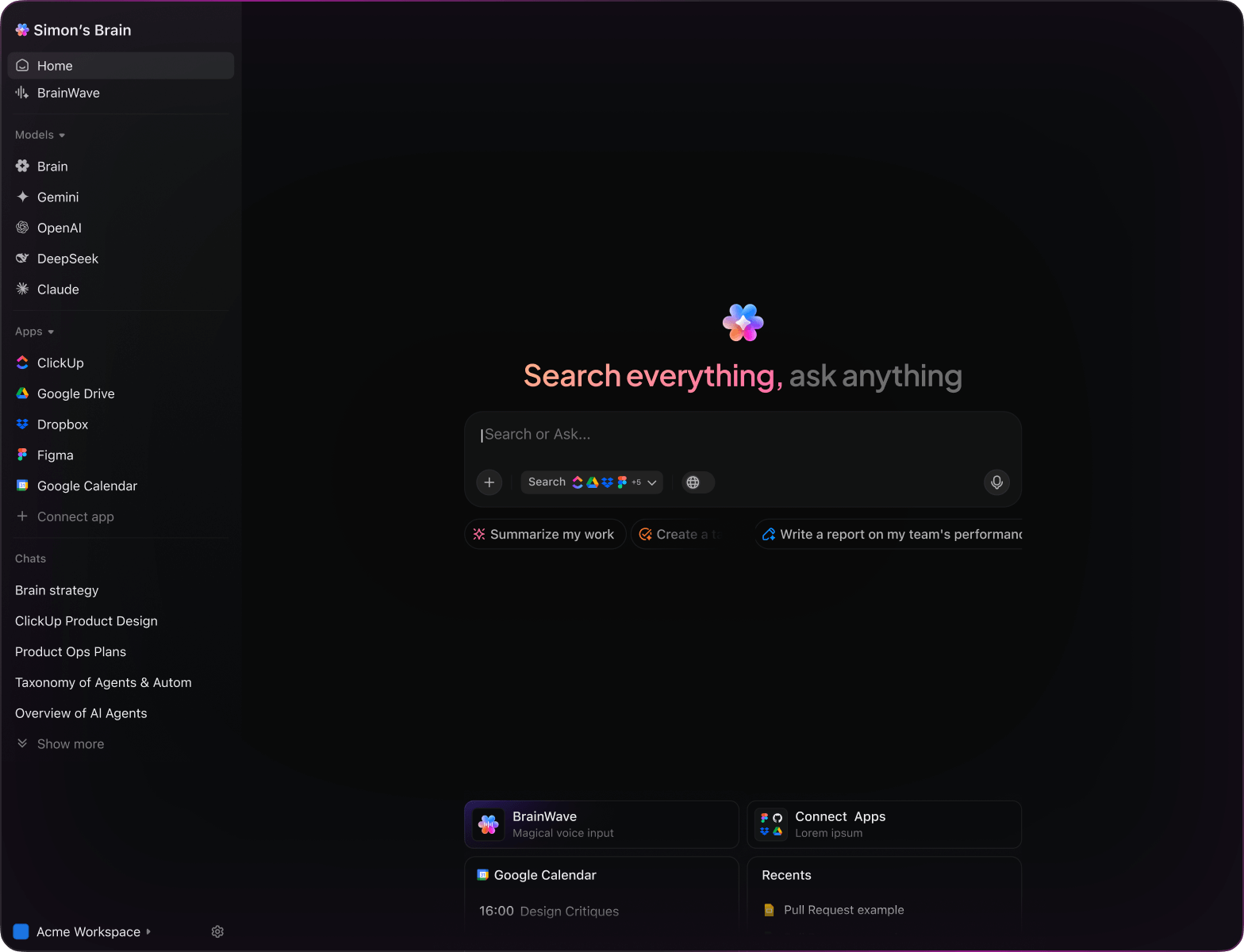AI Narrative Writing
Top AI Prompts for Storytelling with ClickUp Brain
Craft compelling stories, organize your writing process, and elevate your narratives effortlessly using ClickUp Brain.
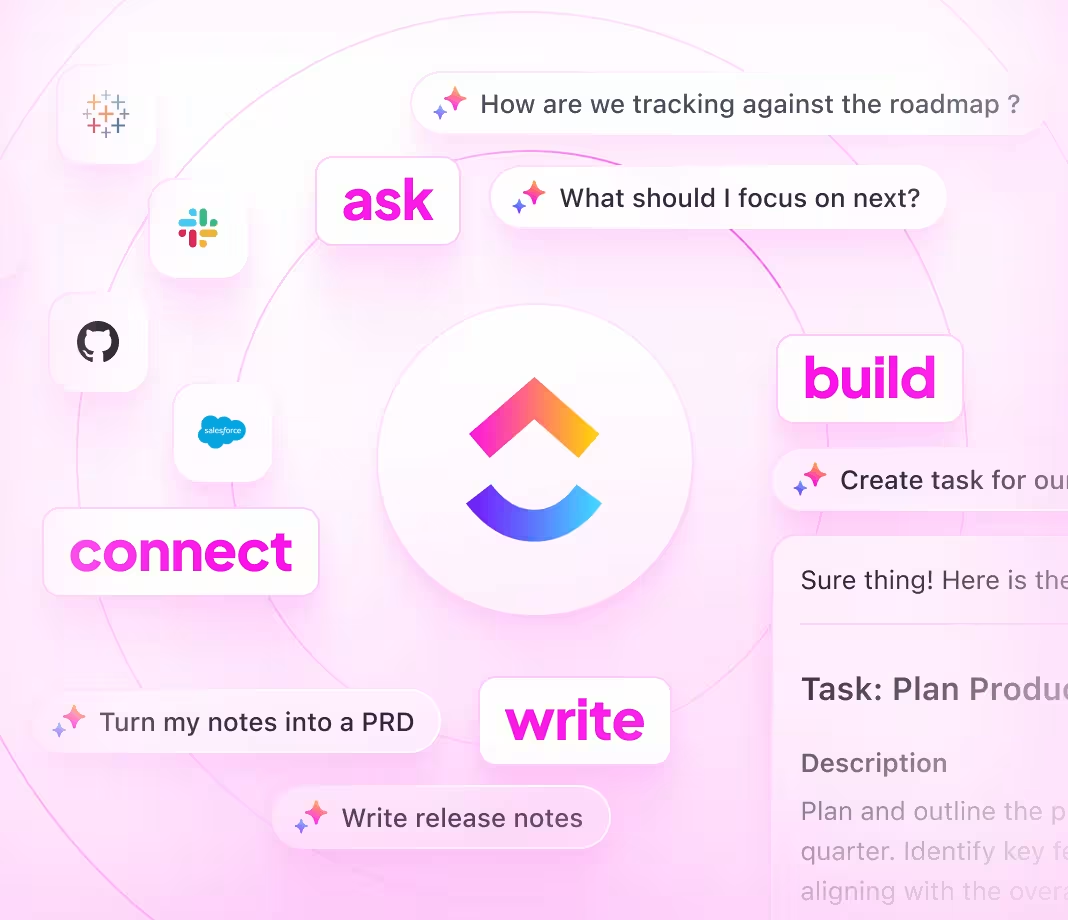
Trusted by the world’s leading businesses
AI in Narrative Writing
How AI Prompts Revolutionize Narrative Writing Workflows
Crafting compelling stories goes beyond just putting words on a page—it involves weaving ideas, characters, and plots into a cohesive narrative.
From brainstorming themes to outlining chapters, character development, and editing drafts, narrative writing demands juggling multiple creative elements—and managing countless notes, revisions, and deadlines. This is where AI prompts become invaluable.
Writers and teams leverage AI to:
- Quickly generate fresh story ideas and character profiles
- Create detailed outlines, scene summaries, and dialogue snippets with minimal effort
- Analyze plot consistency and narrative flow
- Transform scattered notes into structured drafts, checklists, or writing goals
Integrated into familiar tools—such as documents, brainstorming boards, and project trackers—AI in platforms like ClickUp Brain acts as a creative partner, turning inspiration into organized, actionable writing tasks.
ClickUp Brain Compared to Conventional AI
Discover How ClickUp Brain Elevates Narrative Writing
ClickUp Brain integrates seamlessly with your projects, understanding your context so you focus on crafting stories, not explaining them.
Conventional AI Solutions
- Constantly toggling between apps to collect background
- Repeating your story objectives with every prompt
- Receiving generic, unrelated suggestions
- Hunting through multiple platforms for a single draft
- Interacting with AI that lacks engagement
- Manually switching between different AI engines
- Merely a browser add-on with limited scope
ClickUp Brain
- Instantly accesses your story outlines, notes, and team feedback
- Retains your narrative progress and creative goals
- Provides insightful, tailored writing guidance
- Searches all your content in one place
- Supports voice commands for hands-free writing
- Automatically selects the optimal AI model for your needs
- Dedicated desktop app for Mac & Windows optimized for performance
Narrative Writing Prompts
15 Powerful AI Prompts for Narrative Writing with ClickUp Brain
Elevate storytelling—brainstorm, structure, and refine narratives effortlessly.

Outline 5 unique plot directions for a contemporary mystery novel, inspired by the ‘Spring 2025 Story Concepts’ doc.
ClickUp Brain Behavior: Analyzes themes and character notes from the linked document to propose fresh narrative paths.

What are the emerging character archetypes in young adult fiction under $20K publishing budgets?
ClickUp Brain Behavior: Gathers insights from internal market research; Brain Max can supplement with public literary trend data if accessible.

Draft a narrative synopsis for a minimalist short story inspired by Japanese aesthetics. Reference Storyboard #8 and previous concept notes.
ClickUp Brain Behavior: Extracts key elements from linked files to compose a concise, formatted story outline.

Summarize pacing techniques used in bestselling thrillers compared to classic mysteries using our ‘Pacing Q2’ doc.
ClickUp Brain Behavior: Pulls data and narrative analysis from internal documents to deliver a clear comparative summary.

List top thematic motifs used in contemporary fantasy novels, referencing editorial notes and genre studies.
ClickUp Brain Behavior: Reviews internal documents and highlights recurring themes and their narrative significance.

From the ‘Character Development Validation’ doc, generate a checklist for evaluating protagonist arcs.
ClickUp Brain Behavior: Identifies key criteria and structures them into a practical checklist within a task or document.

Summarize 3 dialogue style trends in modern romance fiction from post-2024 author interviews and writing workshop notes.
ClickUp Brain Behavior: Extracts common patterns and stylistic observations from linked research and notes.

From the ‘Reader Preferences Q1’ doc, summarize key expectations for narrative voice in contemporary fiction.
ClickUp Brain Behavior: Analyzes survey data to identify dominant themes and reader feedback trends.

Write engaging and concise chapter titles for a coming-of-age novel using the tone guide in ‘NarrativeTone.pdf’.
ClickUp Brain Behavior: References tone and style guidelines from the document to suggest fitting chapter headings.

Summarize recent changes in publishing standards for content sensitivity and how they affect narrative choices.
ClickUp Brain Behavior: Reviews internal compliance documents and summarizes key updates; Brain Max can add public regulatory info if available.

Generate formatting and style guidelines for manuscript submissions, referencing region-specific publishing standards in our workspace.
ClickUp Brain Behavior: Extracts rules and recommendations from internal documents to create a clear submission checklist.

Create a revision checklist for plot consistency using 2025 editorial guidelines and our manuscript review folder.
ClickUp Brain Behavior: Identifies essential revision points from PDFs and organizes tasks by narrative element or priority.

Compare narrative techniques like unreliable narration across works by authors A, B, and C using our competitive analysis docs.
ClickUp Brain Behavior: Summarizes comparative insights into a concise, easy-to-read format (brief/table).

What storytelling trends are emerging in speculative fiction since 2023?
ClickUp Brain Behavior: Synthesizes trends from internal research notes, concept summaries, and uploaded reports.

Summarize key reader feedback themes from Southeast Asia speculative fiction forums (plot, character, pacing).
ClickUp Brain Behavior: Extracts and prioritizes user comments across surveys, discussion notes, and tagged feedback.
Create Stories Quicker with ClickUp Brain
Cut down revisions, unify your team, and craft richer narratives using AI-driven processes.





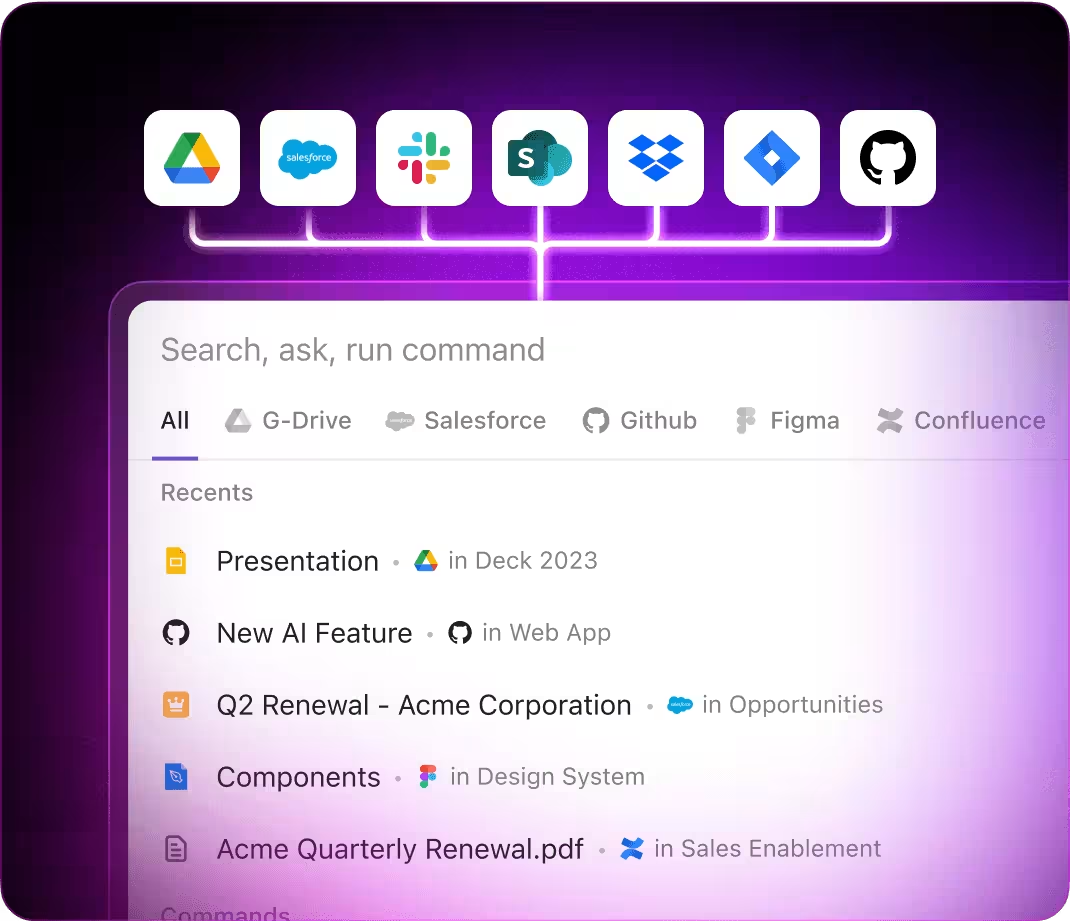
Narrative Writing Prompts Powered by ClickUp Brain
Discover How ClickUp Brain Enhances Storytelling Creativity and Workflow
Prompts for ChatGPT
- Outline a five-point character development plan focusing on motivations and conflicts.
- Compose a compelling synopsis for a fantasy novel emphasizing world-building and magic systems.
- Suggest three alternative plot twists for a mystery story and explain their impact on suspense.
- Draft a detailed scene-by-scene outline for a coming-of-age narrative.
- Compare three narrative perspectives and summarize their effects on reader engagement.
Prompts for Gemini
- Generate three unique settings for a dystopian novel based on current societal trends.
- List innovative dialogue styles that enhance character voice and authenticity.
- Create a mood board description for a gothic horror story highlighting atmosphere, tone, and imagery.
- Propose different pacing techniques for a thriller and rank them by tension-building effectiveness.
- Develop a comparison chart of narrative structures focusing on complexity and reader immersion.
Prompts for Perplexity
- Identify five emerging themes in contemporary fiction and evaluate their cultural relevance.
- Provide a comparison of narrative voice techniques, highlighting emotional impact and clarity.
- Summarize global trends in serialized storytelling and their influence on reader retention.
- Generate a list of five innovative plot devices for speculative fiction and assess their originality.
- Compare classic and modern story arcs and extract three key lessons for effective storytelling.
Prompts for ClickUp Brain
- Transform this brainstorming session into clear writing tasks with deadlines and assigned roles.
- Summarize feedback from beta readers and generate prioritized revision tasks.
- Analyze plot outline notes and produce a checklist of scenes needing further development.
- Create a task list from collaborative discussions on character arcs, including priority and dependencies.
- Summarize workshop transcripts on dialogue refinement and generate actionable editing tasks in ClickUp.
How ClickUp Supports You
Transform Initial Thoughts Into Polished Narratives
- Convert scattered story fragments into structured outlines swiftly.
- Generate new plot twists inspired by previous drafts.
- Build customizable templates to accelerate every writing session.
Brain Max Boost: Quickly access past storylines, character notes, and research materials to fuel your next narrative idea.
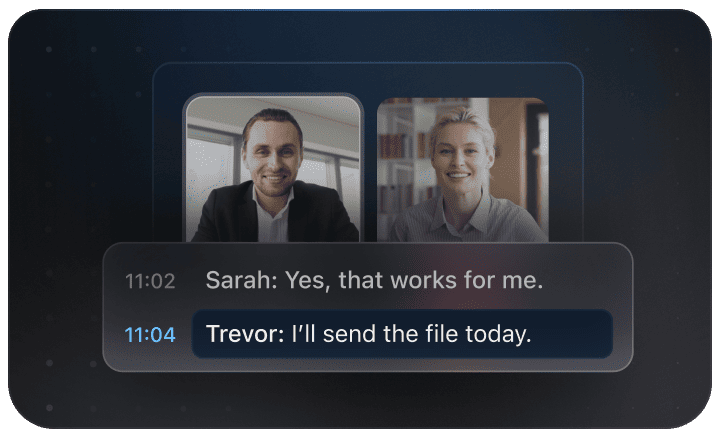
Why Choose ClickUp
Accelerate Your Narrative Writing Process
- Break down intricate story ideas into manageable writing tasks.
- Transform brainstorming notes into structured outlines effortlessly.
- Automatically create progress summaries and chapter overviews without extra effort.
Brain Max Boost: Instantly retrieve previous drafts, character profiles, or plot points across your projects.
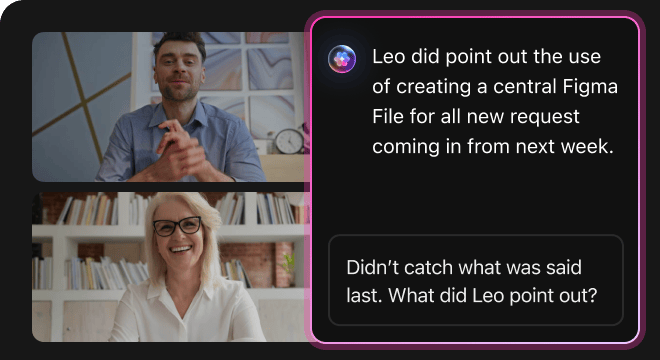
AI Advantages
How AI Prompts Elevate Every Phase of Narrative Writing
AI prompts accelerate creativity and inspire richer, more compelling stories.
Craft Fresh Story Ideas Quickly
Writers explore diverse plots rapidly, enhance originality, and overcome creative blocks.
Enhance Plot and Character Choices
Make informed narrative decisions, deepen character development, and engage readers effectively.
Spot Plot Holes Early
Identifies inconsistencies before they derail your story, improving flow and coherence.
Align Your Writing Team Effortlessly
Facilitates clear communication, unifies vision, and accelerates collaborative editing.
Ignite Creative Breakthroughs
Generates unique twists, enriches themes, and pushes storytelling boundaries.
Integrated AI Support Within ClickUp
Transforms AI suggestions into actionable writing tasks, keeping your project moving forward.
Boost Your Narrative Writing Flow
Cut down on writer's block, enhance story development, and craft richer narratives with AI-powered support.





